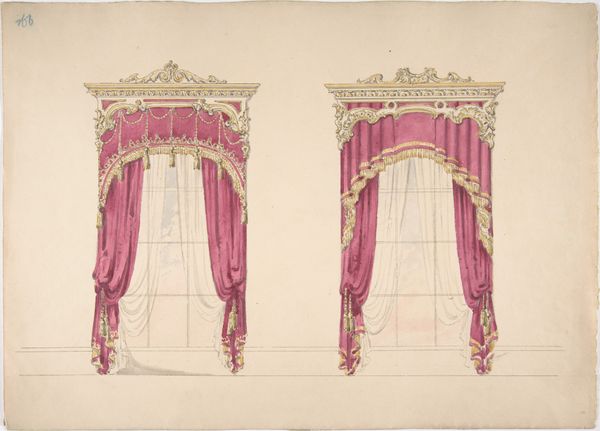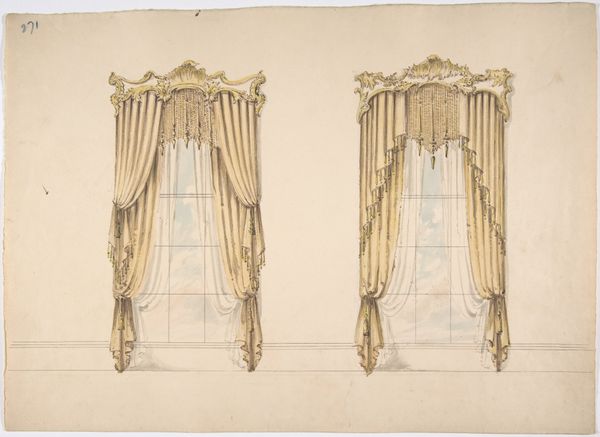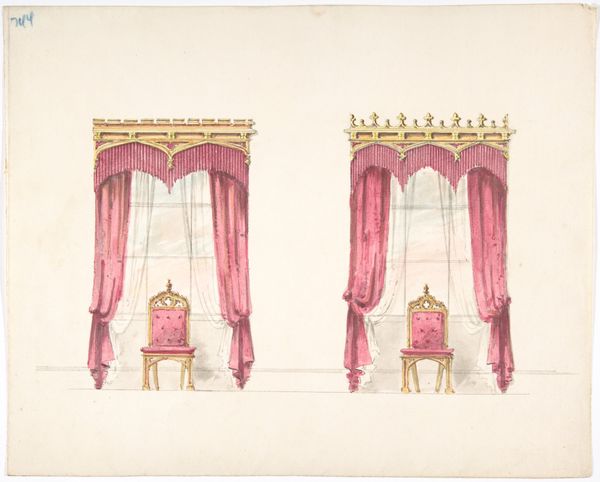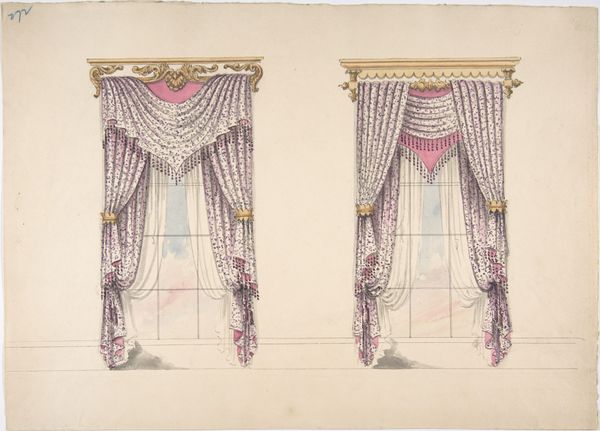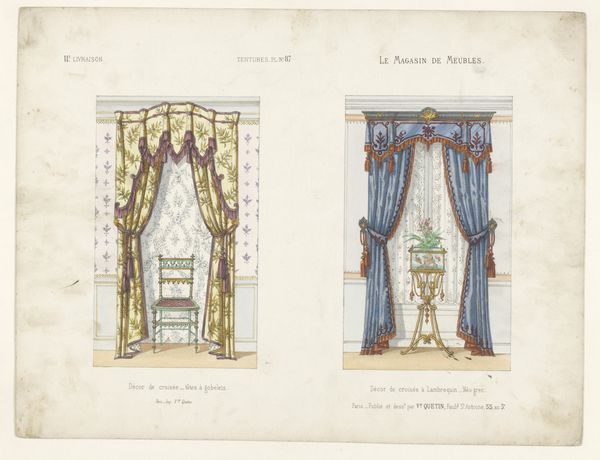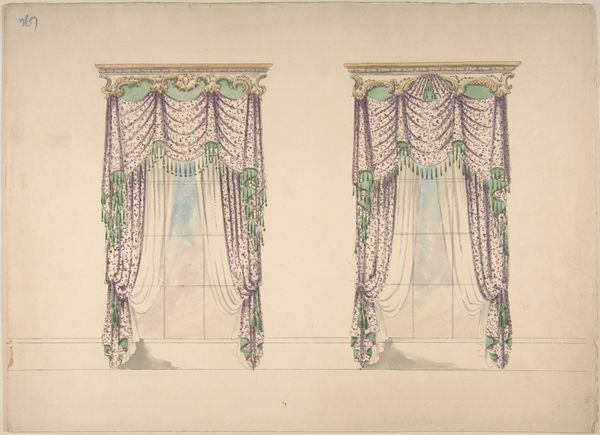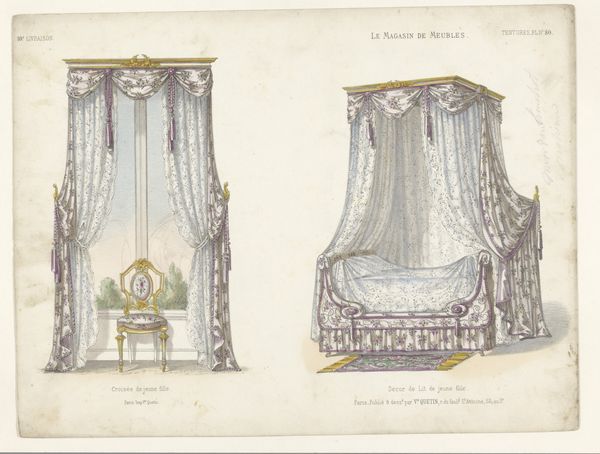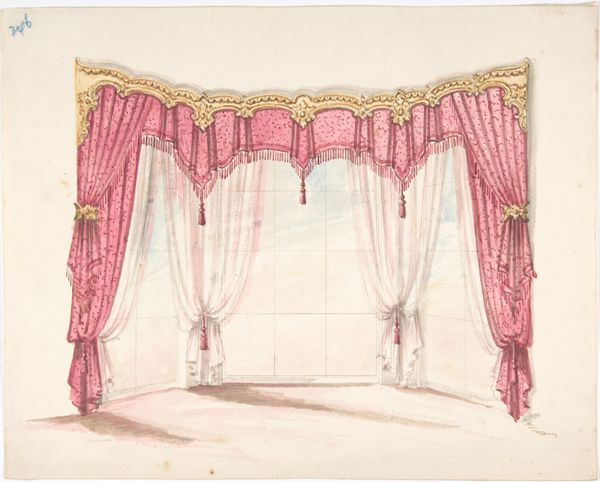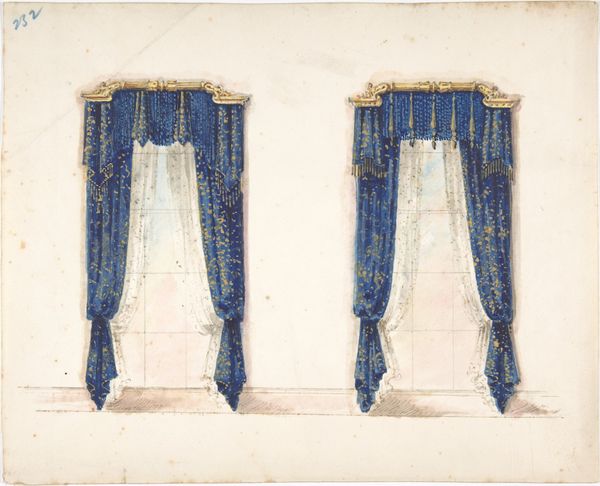
Design for Purple Curtains with Gold Fringes and a Gold and White Pediment 1800 - 1850
0:00
0:00
drawing, print, watercolor
#
drawing
#
neoclacissism
#
water colours
# print
#
watercolor
#
historical fashion
#
watercolour illustration
#
history-painting
#
decorative-art
Dimensions: sheet: 10 3/4 x 14 15/16 in. (27.3 x 37.9 cm)
Copyright: Public Domain
Curator: This is "Design for Purple Curtains with Gold Fringes and a Gold and White Pediment," a watercolor drawing created sometime between 1800 and 1850. It resides here at the Metropolitan Museum of Art. Editor: My immediate impression is opulence, even theatricality. The deep purple juxtaposed with the shimmering gold… it feels staged, almost like a royal portrait backdrop. Curator: Indeed. Considering the social history, these designs offer a glimpse into the domestic ideals of the wealthy during the early 19th century. Think of the burgeoning merchant class, eager to display their prosperity through interior design. Editor: Exactly! And the color choice feels incredibly significant. Purple, traditionally associated with royalty, would certainly make a bold statement about the homeowner’s status. One wonders about the semiotics of "home" as performative space in that context. Curator: Furthermore, the neoclassical elements – the symmetrical arrangement and pediment design – reflect a broader cultural obsession with antiquity, shaping not just art but also architecture and interior decor. There’s a clear aspiration for grandeur. Editor: But looking through a more contemporary lens, I can’t help but question who these lavish interiors were meant to serve. What kind of labor underpinned this display of wealth, and whose voices were silenced to uphold these aesthetic values? Curator: An important consideration. The creation and maintenance of such spaces often relied on exploitative labor practices, a stark contrast to the refined image they project. We see that reflected in visual art of the time too. Editor: Precisely! Examining the artwork, the precision of the watercolour, while beautiful, also highlights the rigid societal structures in play, which often privilege certain narratives while obscuring others. The curtains almost become symbolic of concealing broader truths. Curator: Ultimately, I believe these curtains offer valuable insight. Studying its aesthetic elements reveals the values and power dynamics of a particular era in Western history. Editor: And to me, the illustration invites reflection on the social costs and power structures often hidden behind beautiful facades. Art can be a site of not only beauty but resistance.
Comments
No comments
Be the first to comment and join the conversation on the ultimate creative platform.
